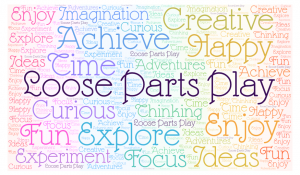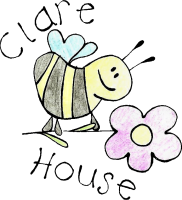Loose Parts Play
 The theory of “loose parts” first proposed by architect Simon Nicholson in the 1970’s has begun to influence child-play experts and the people who design play spaces for children in a big way. Nicholson believed that it is the ‘loose parts’ in our environment that will empower our creativity.
The theory of “loose parts” first proposed by architect Simon Nicholson in the 1970’s has begun to influence child-play experts and the people who design play spaces for children in a big way. Nicholson believed that it is the ‘loose parts’ in our environment that will empower our creativity.
During play, loose parts materials can be moved, carried, combined, redesigned, lined up, and taken apart and put back together in multiple ways. They are materials with no specific set of directions that can be used alone or combined with other materials. Loose parts can be natural or synthetic.
Our indoor and outdoor environment can provide an array of loose parts for use in play such as stones, stumps, sand, gravel, fabric, twigs, wood, pallets, balls, buckets, baskets, crates, boxes, logs, stones, flowers, rope, tyres, balls, shells and seedpods.
Having “loose parts” available in a play space allows children to use these materials as they choose. Often you will find that children would rather play with materials that they can use and adapt as they please, rather than expensive pieces of play equipment by encouraging children to use resources as they choose can provide a wider range of opportunities than one that is purely adult led. As creativity and imagination is supported through own ideas.
‘Loose parts’ theory is about remembering that the best play comes from things that allow children to play in many different ways and on many different levels. Environments that include ‘loose parts’ are infinitely more stimulating and engaging than static ones. The play environment needs to promote and support imaginative play though the provision of ‘loose parts’ in a way that doesn’t direct play and play opportunities, but allows children to develop their own ideas and explore their world.
